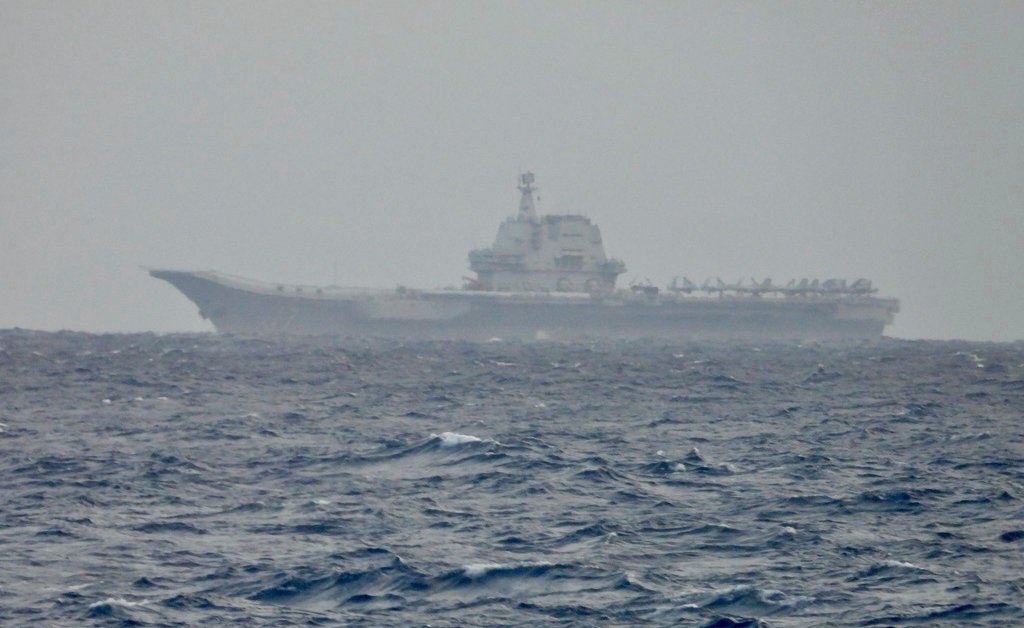TAIPEI, Taiwan — The Chinese military announced large-scale drills in the waters and airspace around Taiwan on Tuesday that include an aircraft carrier battle group, as it again warned the self-ruled island democracy against seeking formal independence.
The joint exercises involve navy, air ground and rocket forces and are meant to be a “severe warning and forceful containment against Taiwan independence,” according to Shi Yi, a spokesperson for the People’s Liberation Army’s Eastern Theater Command. No operational name for the drills was announced or previous notice given.
China considers Taiwan a part of its territory, to be brought under its control by force if necessary, while most Taiwanese favor their de-facto independence and democratic status. Any conflict could bring in the U.S., which maintains a series of alliances in the region and is legally bound to treat threats to Taiwan as a matter of “grave concern.”
Taiwan’s Presidential Office said in a message on the social platform X that “China’s blatant military provocations not only threaten peace in the #Taiwan Strait but also undermine security in the entire region, as evidenced by drills near Australia, New Zealand, Japan, Korea, the Philippines & the SCS. We strongly condemn China’s escalatory behavior.”
The SCS refers to the South China Sea, the strategic waterway that China claims almost in its entirety. China’s navy also recently held drills near Australia and New Zealand for which it gave no warning, forcing the last-minute rerouting of commercial flights.
Taiwan’s Ministry of National Defence said it had tracked 19 Chinese navy vessels in the waters surrounding the island in a 24-hour period from 6 a.m. Monday until 6 a.m. Tuesday.
It added that it had been tracking the movement of the Shandong aircraft carrier since Saturday and that its carrier group had entered into Taiwan’s air defense identification zone, a self-defined area tracked by the military. China regularly dispatches military assets into the zone, which China does not recognize, but Taiwanese officials have recently warned that China could launch a sneak attack under the guise of military exercises.
“I want to say these actions amply reflect (China’s) destruction of regional peace and stability,” said Taiwan’s Defense Minister Wellington Koo.
Taiwan has set up a central response group to monitor the latest exercises, Koo said.
On the streets of Taipei, people said the atmosphere was tense but they were more concerned about the economy and developments surrounding the administration of U.S. President Donald Trump.
“The Chinese Communists spend so much time and effort on these things but most people don’t pay much attention,” said Lin Hui-tsung, a noodle seller in the city’s Tiananmu district.
China’s Coast Guard also announced it was conducting a “law enforcement patrol” on Tuesday around Taiwan, its spokesperson Zhu Anqin said.
The drills come just two weeks after a large-scale exercise in mid-March, when Beijing sent a large number of drones and ships toward the island.
China’s Taiwan Affairs Office said the exercises were directed at Lai Ching-te, Taiwan’s strongly pro-independence president.
“Lai Ching-te stubbornly insists on a ‘Taiwan independence’ stance, brazenly labeling the mainland as a ‘foreign hostile force,’ and has put forward a so-called “17-point strategy … stirring up anti-China sentiments,” said China’s Taiwan Affairs Office in a statement on Tuesday. “We will not tolerate or condone this in any way and must resolutely counter and severely punish these actions.”
In mid-March, Taiwan’s Lai put forward a 17-point strategy aimed at shoring up Taiwan’s national security. The points include allowing espionage cases to be tried by military courts and making immigration rules stricter for Chinese citizens applying for permanent residency.
Lai’s words and actions appear to have especially angered Chinese leader Xi Jinping, whose previous attempts at intimidation have had little effect on the Taiwanese public. Those have often been timed in response to expressions of Taiwanese independence, including a visit by then U.S. House leader Nancy Pelosi.
China’s PLA also released a series of videos to publicize their military exercise, including one in which they depict Lai as a green parasite “poisoning” the island by hatching smaller parasites. The video shows Lai’s head on the body of a bulbous green worm, with a pair of chopsticks picking him up and roasting him over a flame set over Taiwan.
Beijing sends warplanes and navy vessels toward the island on a daily basis, seeking to wear down Taiwanese defenses and morale, although the vast majority of the island’s 23 million people reject its claim of sovereignty over Taiwan. In recent years, it has stepped up the scope and scale of these exercises, from sending small numbers of individual fighters and surveillance planes to sending groups of planes, drones and ships.
“The PLA organized naval and air forces to practice subjects such as sea and land strikes, focusing on testing the troops’ ability to carry out precision strikes on some key targets of the Taiwan authorities from multiple directions,” said Zhang Chi, a professor at China’s National Defense University in an interview with Chinese state television.
Taiwan and China split amid civil war 76 years ago, but tensions have risen since 2016, when China cut off almost all contacts with Taipei.
___
Wu reported from Bangkok. Christopher Bodeen contributed to this report from Taipei, Taiwan.
